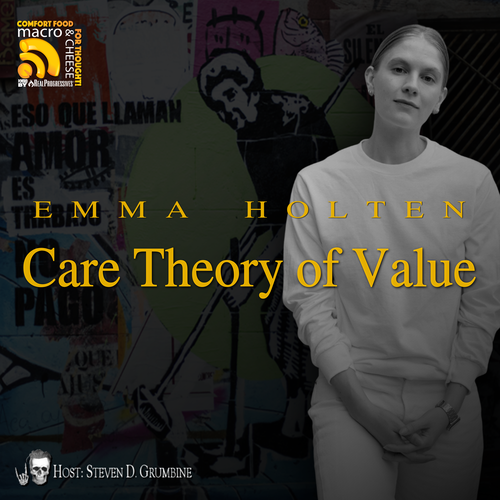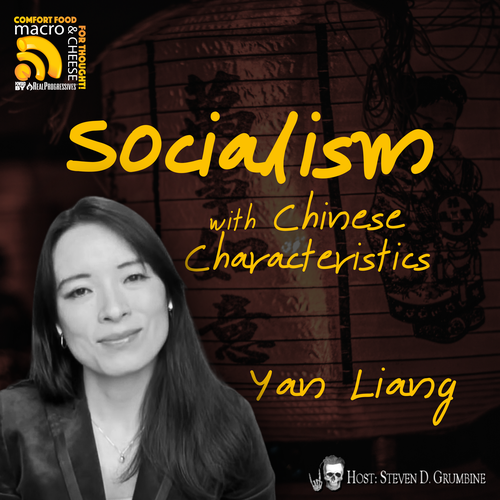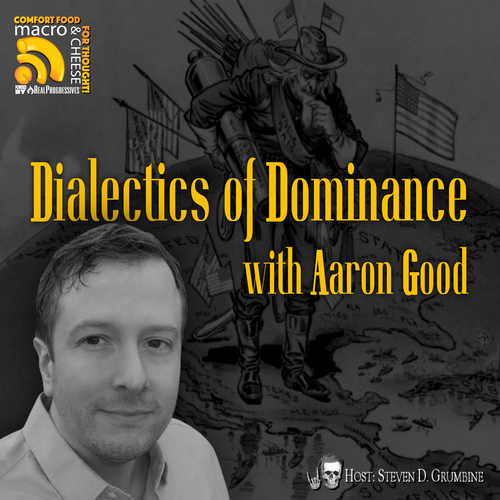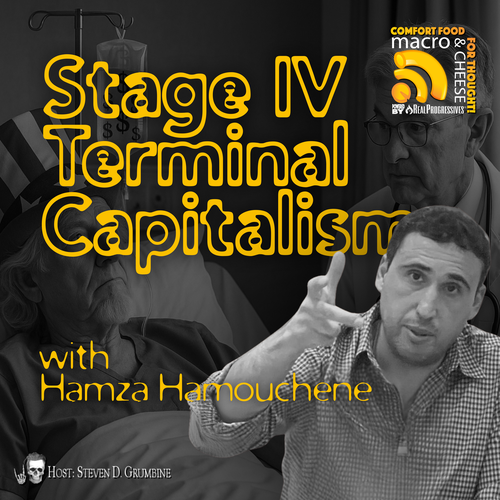Where does a bullet go? The flash of light, the explosion’s dull boom mixes with the sharp crack of the sound barrier, and a few cents worth of metal finds a new resting place. Maybe it took a life, maybe it will poison one later with lead or depleted uranium, shattered families or PTSD. However, the crescendo is but a brief moment in the long trajectory of a bullet, its arc affecting lives far from combat zones, its impact circulating, beginning long before and lingering long after that moment of violent destiny. Before a soldier’s bullet can take a life, it must first feed another.
There is a strange misconception in America that deficit spending on war does not impact the economy in the same way (upwards) as spending on our infrastructure or healthcare. Money created by spending does not leave the system until it is destroyed by taxing. When ordinance falls, people and places are lost forever, but the money Uncle Sam supplies for its manufacture and deployment remains. The dollars that built a bomb (or a bullet) are not in any way neutralized by the far-off fiery destruction. Wherever one lives, whatever one does, the defense industry is ubiquitous in America. The dollars flow out of the military industrial complex and into the non-defense community that supports it. Soldiers and engineers buy homes, food, entertainment, education, their spending spilling out and replenishing our desiccating society. Obviously, we need to slash our obscenely large and lethal military, but if we are to avoid destroying ourselves in the process, this act must coincide with a broader increase in public spending.
Newton’s third law says that for every action there is reaction. The recoil of a bullet, the thrust of the engine, the explosion throwing shrapnel and the flesh absorbing it. Action and reaction, true in all life as much as in physics. The photosynthesis of plants turning CO2 into O2, the metabolism of animals turning it back again. For societies, it is fortunes built on poverty, it is violence begetting violence, growth begetting destruction, to what end we do not yet know. In economics, it is liability begetting asset, deficit begetting surplus, and it is here, in a government’s budget, that our bullet’s life begins and a ghost lingers.
The federal deficit is the private surplus; therefore, the federal debt is nothing more than the accumulated private sector holdings. A federal surplus comes at the cost of diminishing household wealth. Therefore, cutting military spending means less money entering our communities. If the goal is a trillion-dollar tax cut for working people, then that is a separate, and perfectly reasonable, demand. There is no big vault of our dollars; for the federal government, taxing and spending are separate operations that never need to balance. Public entities from California down to your local town, businesses big and small, and all individuals, must fill our buckets before we can water our gardens. Uncle Sam, on the other hand, controls the economic weather, he decides where it rains. Cutting the discretionary budget in half would reduce the number of Treasurys issued, but would not affect tax rates, leaving us poorer than ever.
So, where does a bullet’s – or an apocalyptic warhead’s – dollars go? Answer: those dollars fuel our communities. The Department of Defense, with well over a million active-duty military personnel and nearly a million reservists spread across roughly 4,500 separate military facilities, is the largest single employer in the world, and is just the tip of the military-industrial-complex iceberg. Far larger by several fold than Uncle Sam’s own pool of employees are the contractors.
Uncle Sam purchases a bullet for as little as ten cents, and at the other end of this spectrum, he spends trillions of dollars on nuclear weapons modernization and maintenance. Who needs a Green New Deal when you can have nuclear winter?
Historian Aaron Good said on Macro N Cheese:
“I feel that we are largely powerless in this because that’s the system they’ve created. The public really is largely neutralized, but that internationally, the U.S. Empire, like every Empire dialectically generates the forces of its own demise. It generates its own nemesis, and that’s what we’re seeing now, I believe.”
The U.S. government recently passed a 4,155 page, 1.7 trillion dollar budget. $858 billion for “defense,” and $772 billion for “domestic programs,” (including $119 billion dollars in veterans’ healthcare alone that should be added to the former and subtracted from the latter). During this budget period, it is forecast that over half a trillion dollars will be deleted from the public side of the spreadsheet by federal taxes. The remaining $1.1 trillion or so is called deficit spending, and it is added to the government’s “debt,” which, as we said above, mirrors the private savings. Meaning more money was put into the system than was taken out of the system. Too bad it will not be distributed fairly!
We can all imagine where the domestic spending goes at first — into employees and materials (and shareholders) for our programs and infrastructure. But, where did the bullet’s dollars go? Vanished like so many Americans’ modest dreams? No! Yet, inflation, inflation, inflation, the powers claim, is why we cannot have nicer things. A familiar chorus that falls oddly silent when we throw trillions of dollars at the military or give trickle-down tax cuts, almost as if the whole song and dance was a lie in the first place. “Nonsense,” we are told, has more than two centuries of wars not proven that money is scarce and our rulers infallible? Common sense and quashed evidence be damned, this is America, where everyone knows that billionaires are saints and only traitors cite data.
Steve Grumbine recently asked of Ben Norton:
Grumbine:
“What are your thoughts on One Belt, One Road, the jealousy of the United States and a lack of foresight that neoliberal capitalism has pushed onto the U.S. for short-term gains minus the long-term benefits? And where do you think this goes?”
Norton:
“Well, unfortunately, I think it goes toward war. This is what you asked about earlier because what’s happening now. This new Cold War is about trying to save imperialism and specifically save neoliberalism because the entire neoliberal model, as I’ve been stressing here, is predicated on imperial domination of the world, austerity measures being imposed around the world, and deindustrialization and financialization and extraction of wealth from the global South in order to send that wealth into the imperial core.
“And that system is in decline, so the U.S. is trying to wage war in order to save that system. And the main threats to that system are China and also, to a lesser extent, Russia and Iran. So the U.S. does not have an economic advantage anymore. China has the largest economy and China continues to grow. And again, it’s real economic growth, unlike the fake economic growth in the U.S. which is all asset price inflation and stock buybacks and financial rating by hedge funds.
“What the U.S. does have an advantage in is military power. The U.S. is still by far the largest military power in the world. It has 800 foreign military bases. China has one foreign military base and that is part of UN anti-piracy operations in Djibouti. Russia has seven or eight foreign military bases. The U.S. has 800. The U.S. spends, on paper, nearly $900 billion per year on its military.
“In reality, it’s well over a trillion per year. And that’s not considering the trillions more that are off the books. The Pentagon failed its first-ever audit. So the U.S. does have overwhelming military force. The U.S. spends more than the next nine largest military spenders in the world combined, or the other 180 countries in the world combined, on its military.
“So, the U.S. can destroy China and Russia and that’s what they’re going to try to do in order to save that model. Because again, that economic model is not based on production, it’s based on extraction. And if you can no longer extract, your economic model is going to collapse. And that’s what we’re seeing now.”
The dollars created for “defense” circulate in American communities (and around the world) long after any of these dollars’ intended firestorms end. Of course, the soldier sends money home to his family. Before that, however, the bullet he fired was assembled by factory workers, the factory workers’ ingredients came from different refineries, the refinery workers’ medium came from far flung mines, and from the miner’s ore to the final bullet, the whole thing was brought together at each step by teamsters. The spending is spread across the nation, but recall that it does not stay in “defense,” these workers recycle it into the domestic economy, funding all manner of municipalities, schools, businesses, churches and charities. Our domestic economic networks are kept from starvation, for the most part, by this circulation originating from “defense” spending. The caveat being that far too few of those involved can afford healthcare or college or dignity, which is why, in what is called the economic draft, they send their children off to be soldiers in the first place.
The very same dollars spent on killing abroad are simultaneously spent on surviving at home. This is why individual states, as currency users, compete not just for the $772 billion in domestic spending, but also for the $858 billion in military spending. Whether the government directly pays a Vermonter’s food or heating bills, or pays to station F-35s in Burlington, they inject the lifeblood liquidity into that community.
This is why even our alleged progressives like Bernie Sanders will compete for both sources of federal-spending-turned-local-revenue for his state, domestic and defense, because it can mean the difference between survival and starvation for the group of citizens they were elected to represent. “Kill or be killed” is the U.S. policy towards its own people. Do it for the government or the government will do it to you. Whether you are a soldier or a schoolteacher, our lives are sustained by a starvation diet of federal spending that is more than 50 percent war. If a constituency fails to bow before the military industrial complex, the industry can shift the federal support to another currency-using locale more amenable to the income. Take that, peaceniks!
It’s not just domestic economies salivating for our military money, as Michael Hudson stated on a recent Real Progressives RP Live webinar:
“If we run a balance of payments deficit in the United States the dollars end up in the foreign central banks. Most of the U.S. balance of payments deficits since the Korean war have been for military spending. So, while America is spending money on creating military bases all over the world, these countries will end up with the dollars that we spend to build the bases and buy off client oligarchies.”
The purpose of all this military might? Poverty is not just a domestic policy tool, it is the policy that our military interventions are meant to enforce when other measures fail.
Hudson Explained:
“The IMF is one of the institutions that is the arm of American hegemony. Preventing economic growth occurring outside of the United States. Essentially the IMF is a… it’s a small office in the basement of the Pentagon, run by the neocons, to make sure that other countries cannot have any policy that would not let American firms come in and buy their raw materials and their natural resources and their monopolies. So, think of the IMF as a tool of the military, but much more right wing than any general would dare to be.”
Ending the imperialist wars while using faulty economic framing means adding fuel to the fire of the war on working people both at home and abroad: the most lethal war of all — austerity. Austerity is poverty as policy, it is structural violence based on fictions told by our abusers. Professor James Gilligan says of structural violence: “By this I mean the deaths and disabilities that are caused by the economic structure of our society, its division into rich and poor. Structural violence is not only the main form of violence, in the sense that poverty kills far more people (almost all of them very poor) than all the behavioral violence put together, it is also the main cause of violent behavior. Eliminating structural violence means eliminating relative poverty.”
What does structural violence look like? It is unemployment when there is much work to be done; it is mountains of surplus food and fast fashion wasted while people go hungry and in tatters; it is empty mansions juxtaposed against homeless families; it is an intentional shortage of healthcare that keeps profit margins obscenely high; it is the unequal demographic burdens of industrial pollution; it is spring water for the wealthy and lead pipes for the workers; it is the prejudiced outcomes of our criminal justice system; it is vastly different educational and vocational opportunities determined by zip code before birth; it is strategic gentrification eschewing revitalization; it is the central bank raising interest rates; it is monopolies going unbroken; it is labor movements being broken; it is a tax structure that engineers generational inequality; it is a spending regime that maintains pockets of power extracted from inflicted poverty. This deadliest of struggles—ending poverty, extreme inequality, the exploitation of people and planet and the massive violence it fuels—requires more spending, not less.
When we talk about ending war, it is imperative that we include the austerity war. As Stephanie Kelton put it, “This is why I have zero patience for Robin Hood politics. The sick, the poor, and the planet wait while you chase gold coins in a fiat world.” A study from the United Nations found that annual deaths from homicide are multiple times higher than those from all the world’s armed conflict, and that this tragedy is driven unequivocally by “inequality, unemployment, political instability, the prevalence of gender stereotypes in society, and the presence of organized crime.” Organized crime alone accounted for as much death as all war and is, tellingly, often the other (nonmilitary) employment of last resort available to our most neglected communities. Additionally, researchers say that pollution is killing far more people prematurely than are wars, disasters, and homicides combined. Failing to understand and correctly explain the financing for policies such as a green new deal delays their implementation, and is unknowably lethal. Around ten million lives per year are lost at present, and no one knows how much that pace will accelerate in the decades to come.
Rising violence, deaths of despair, extremist ideologies, preventable diseases and ecological disasters—these are some of the costs of bad economics. While one faction wants to slash military spending and the other domestic spending, neither ideology realizes that they are not saving anyone’s money. They are, in fact, asking for less of it flowing through their communities, and in turn less food in their own bellies. If you have decrepit factories, dilapidated schools, and disintegrating bridges, then less spending does not make more money available to fix those things. Whether you are right, left, or other, swallowing the mainstream economic paradigm means you are fighting against your own class, the working class, and are instead volunteering for a tiny group of murderous elites in the accelerating conflict of haves versus have-nots.
If we want to rid society of the parasites that propagate war and poverty, that feed wherever the fabric festers, we need a better plan than just starving the host. Much wiser would be a dose of medicine and a change of diet. Uncle Sam is a bloody old sow, suckling litter after litter of the piglets of war. We are not protected by their predations, but we are sustained on their excrement. How does it taste?









